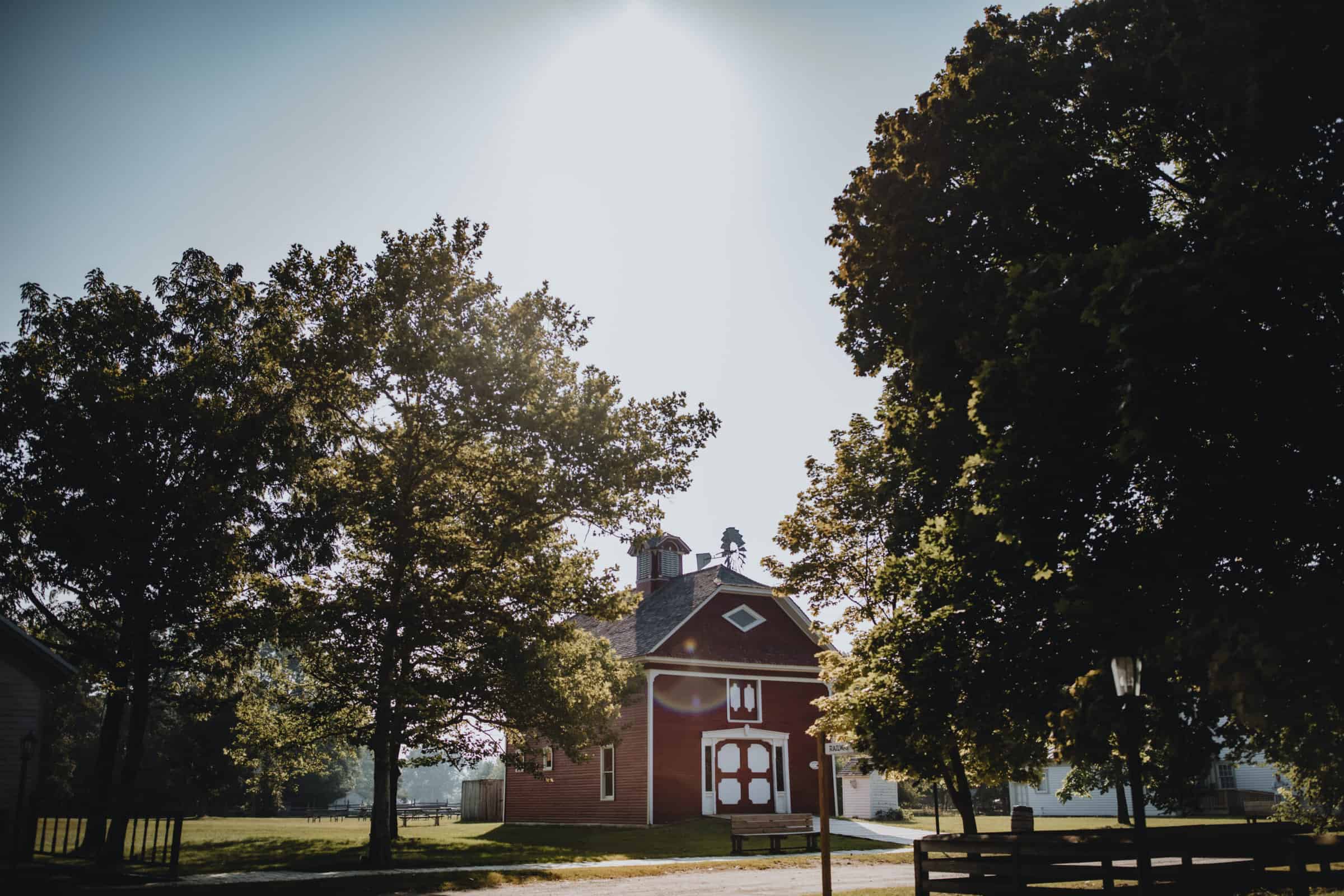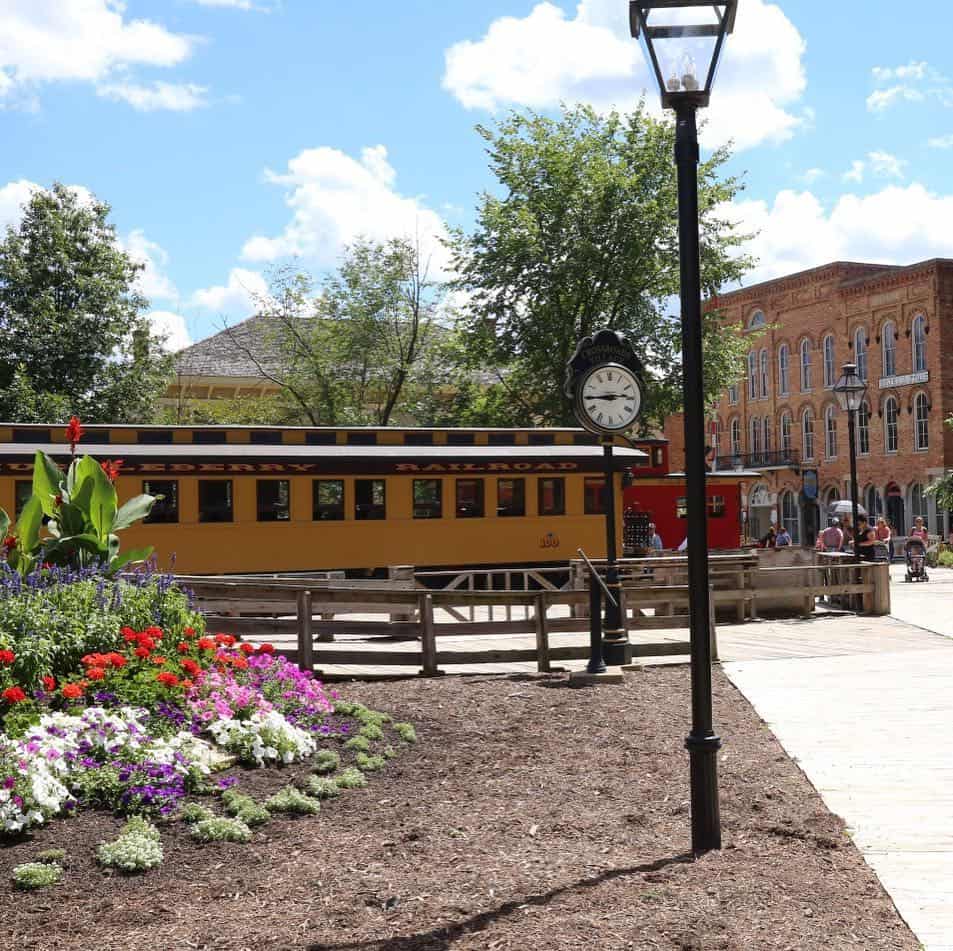Village Buildings & Trades

In 1967, local individuals and organizations realized that many structures of historical importance in the Flint area were being destroyed, and plans for the construction of interstate highways and urban development would necessitate the demolition of additional buildings. There was also a realization that rural skills, equipment, and crafts were being lost.
The idea of a Farm Museum was proposed at the December 12, 1968 meeting of the Commission by John West and Stanley Mahaffy and considerable interest was shown by the Commission.
On May 8, 1969, the Commission appointed as advisory committee on historical preservation. The late Clarence Young of the Manufacturer’s Association of Flint was appointed chairman. The Genesee County Historical Society became involved with the project and was represented on the advisory committee.
The Wisner Carriage Barn and Buzzell House, donated by the Highway Commission, were moved to the present site through an appropriation of $20,000 by the Genesee County Parks and Recreation Commission. The buildings were placed within the Genesee Recreation Area near the C.S. Mott Children’s Farm—land that had been given to the people of Genesee County by the C.S. Mott Foundation. The Carriage Barn was moved to the area June 30, 1969; the Eldridge-Hamner House, located on land that had been purchased by the Commission in Genesee, was also moved to the Village site.
Eventually, ideas to create a farm museum and preserve buildings of historic importance merged into the concept of a rural village. Impetus came with the realization that the nation’s bicentennial was fast approaching. In the summer of 1973, the County Board of Supervisors adopted the creation of a rural Crossroads Village as Genesee County’s Bicentennial project and funds were appropriated for planning purposes. The firm of Johnson, Johnson, and Roy of Ann Arbor employed to develop a master plan. The plans for this hypothetical Crossroads Village evolved from the common characteristics of rural villages in Genesee County as depicted in the 1873 Atlas of Genesee County. The master plan was approved at the August 1974 meeting of the Commission, and in September and October, the Clayton Town Hall and Davison Depot were moved to the Village. The Village, dedicated July 4, 1976, became a reality.
The first building reconstructed from largely original materials was the Stanley School. The first buildings to be replicated were Dr. Barbour’s Office, and the Fenton General Store and Opera House. Moved from Fenton, Michigan, this building includes a second-floor opera house and a U.S. Post Office on the first floor. Built in 1869 by Dexter Horton and David Colwell at the corner of Leroy and Caroline Streets in Fenton, it housed many businesses, including a post office from 1869-1883. The opera house was used by churches, schools and fraternal organizations. Admission was 25 cents for adults and 15 cents for children. General Tom Thumb (of P.T. Barnum fame) appeared there before 1879. Last used in 1975 as a dime store, the structure was torn down and rebuilt at Crossroads for the 1978 season. The opera house was completed in 1980. Some of the original bricks, ceiling beams, and window casements were used in the rebuilding. And that “FLT” you can see in the brickwork? It’s a symbol for the Odd Fellows International fraternal organization. It stands for the organization’s motto, “Friendship, Love and Truth.”
Effort was made to furnish all of the buildings with artifacts of the period 1860-1880 and create an impression of a “living village” with the sights, sounds, smells, and activities characteristic of that period. In addition to preserving buildings and artifacts, the Village serves as a place to demonstrate the crafts of the past. Thus, the Village, the Huckleberry Railroad, and the Genesee Belle serve as valuable educational resources and tourist attractions. You can experience a day in the life for yourself surrounded by authentic and replica buildings and artifacts. Some buildings, such as the Atlas Grist Mill, had to be slightly modified to operate in present day (i.e. the Grist Mill is no longer water powered. Rather the stones are powered by an electric motor), but the processes of daily tasks are still the same.
Interpretive craftsmen, thoroughly grounded in the ways of a century ago, give life to the Village. Interpretive craftsmen also play a major role in utilizing and safeguarding valuable, and possibly irreplaceable, artifacts from donors who believe in the purposes of the Village and who want unborn generations to be able to see and enjoy these artifacts.
A good interpretive craftsman gives meaning to the things visitors see and the life and times of the post-Civil War era in Genesee County. Through interpretive methods, such as role playing, craftsmen project to visitors an understanding of the people who lived here, their origins, education, skills, values, religious and social customs, and the many tasks and problems that comprised daily living.
Keep Exploring

Huckleberry Railroad

Halloween Ghosts & Goodies

Christmas Holiday Magic

Field Trips

Village Amusement Rides

Summer

Ladies Night Out

Day Out With Thomas

Village Buildings

Railfans Weekend










